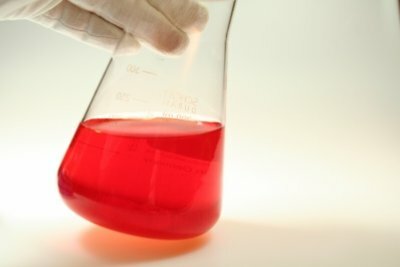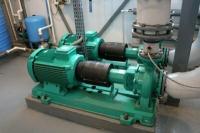Calculate reaction rate in chemistry
Many students have difficulty calculating the rate of reactions in chemistry. With the right formula and approach, you can easily solve these problems!

Simply put, the rate of response is in the chemistry the average speed with which new products are created from merged educts. But how can you calculate the reaction speed? What sizes does it depend on?
Response speed - depending on the following parameters:
- The rate of reaction depends on the temperature at which the reaction takes place. This dependency is expressed in the RGT rule, the "reaction rate-temperature rule".
- The RGT rule states that if the temperature is increased by 10 ° C, the reaction rate increases by two to four times.
- However, the RGT rule is only a "rule of thumb", which means that it is very imprecise and does not apply to every reaction.
- The reaction speed is also dependent on the concentration of the starting materials or of the final substances.
- If the concentration of the starting materials is very high at the beginning, the reaction runs faster because it It is more likely that the particles of the starting materials collide and products are formed will.
- If the concentration of the end substances increases, the reaction slows down, as the probability that particles of the starting substances will be lost decreases meet, as there are more products in the test tube and the number of particles of the starting materials that are still available has decreased.
- The reaction rate is therefore dependent on the concentration of the starting materials or Products and the time span over which the change in concentrations was measured.
Chemistry: titration - with formula you arrive at the solution
In chemistry, titration is a classic analytical method. If the …
Formula and instructions for calculating the reaction rate:
- When calculating a quantity, you first have to find a suitable formula. To do this, consider the size specified as "wanted" in the task.
To calculate the average speed of reaction, you can use the following formula:
RG = ∆c / ∆t
- You should then be clear about the abbreviations in the formula or know what the abbreviations stand for.
The abbreviation "RG" means the reaction speed, the abbreviation "∆c" stands for the change in concentration of a substance, and the abbreviation "∆t" stands for the period of time in which the measurement is carried out.
- Now take a closer look at the sizes "given" in the task.
If the concentration of the product has changed, you do not need to change the formula:
RG = ∆c (product) / ∆t
If the change in concentration of the educt is given as a given variable, you must put a minus in front of the Set concentration change, as the concentration of the starting materials during the course of the reaction sinks:
RG = - ∆c (educt) / ∆t
- If you are sure of the formula (also with regard to the given values), then concentrate on the units:
The concentration of a substance is expressed as mol / l.
The time interval is specified in seconds, i.e. has the unit s.
The unit of the reaction rate is mol / l ∙ s.
- If you had problems creating the formula, it may be that the concentration is not given but has to be calculated first.
Concentration is the amount of substance per volume.
The amount of substance is the mass m divided by the molar mass M.
- Once you have calculated the result, you should double-check that you have also used the correct unit here.
With the above formula and knowing that the rate of reaction in chemistry depends on temperature, length of time and depends on the concentration of a substance, it should no longer be a problem for you to control the speed of the reaction to calculate. I wish you success!
How helpful do you find this article?


